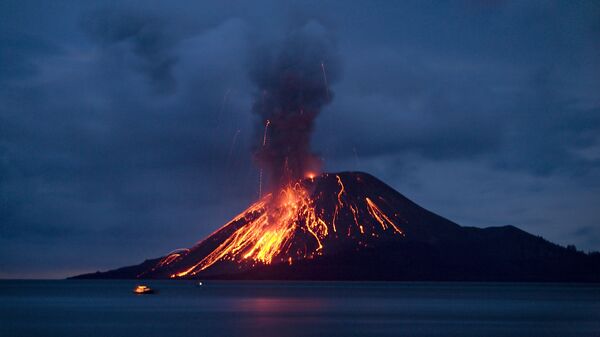Sputnik spoke to Mauro Di Vito, a volcanologist and researcher at the “Vesuvius Observatory” (“Osservatorio vesuviano”) section of the INGV (the world’s oldest volcano observatory), to find out how the discovery will help those living in highest-risk volcanic areas.
Sputnik: What is the new study about?
Mauro Di Vito: The objective of the study was to create a model that will consider all the changes to a caldera that influence the position of eruptive vents. In large volcanoes, such as the Campi Flegrei caldera, eruptions don’t always occur in the central mouth, but can occur along the sides of the caldera or in areas other than the previous ones.
The model that we’ve created takes into account the changes in the volcano’s structure over time, as well as previous eruptions. The important thing is to understand how this affects the position of new eruptive vents.
Sputnik: Why is it so difficult to predict an eruption?
Mauro Di Vito: The model we are talking about doesn’t predict volcanic eruptions, but determines the position of eruptive vents. There are other systems to study the moment when the eruption takes place. Our model serves to predict where a future eruption can occur in a volcano.
Let’s take the example of the Phlegraean Fields (Campi Flegrei) – there are so many eruptions there; the magma could rise in different parts of the volcano. If the volcano were uninhabited, there would be no danger. But part of it is in Naples, with some areas located on the volcano.
Sputnik: Your study was initially based on the Phlegraean Fields situation. What is the current situation in this dangerous volcanic area? Has any evacuation plan been developed?
Mauro Di Vito: An emergency plan has been developed and in October there will be a civil defence drill that will include an evacuation from the municipality of Pozzuoli, which is located in the centre of the volcano. It means that the scientific community is able to react to a possible eruption and warn people about it. The authorities should be able to implement all measures to reduce the risk to the population. Even though it will be an emergency training exercise, it will help understand where the main problems are and what elements of the plan should be modified. After all, we are talking about 350,000 inhabitants.
Sputnik: What are the next steps in your study?
Mauro Di Vito: We want to create hazard maps for all volcanoes, where we’ll mark the opening of eruptive vents. Let’s take Etna – understanding where the eruption will occur means better prediction of the course of the lava flow or better understanding where an explosive eruption will originate. We want to obtain the most reliable hazard maps possible with all the parameters taken into consideration.
The views expressed in this article are solely those of Mauro Di Vito and do not necessarily reflect the official position of Sputnik.


